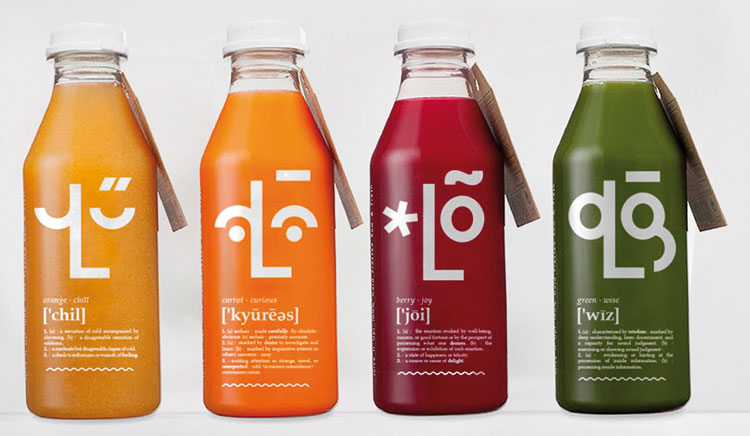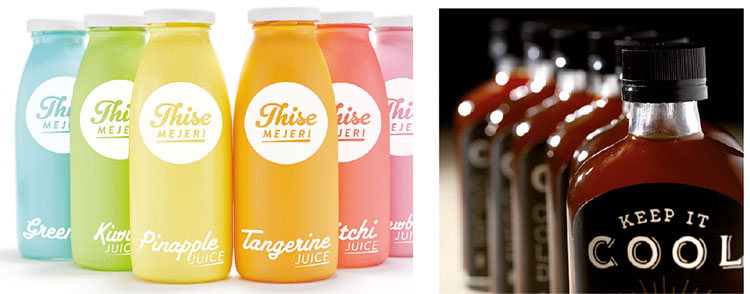The Italian beverage market – Data 2017
Final data for 2017 and first projections for 2018 for trends on the Italian market. Production, consumption and types of packaging of alcoholic and non-alcoholic beverages. Barbara Iascone

According to the analysis by ISMEA (Service Institute for the Agricultural-Food Market) 2017 coincided with the recovery in food consumption (Italian spending in this area grew by 3.2% compared to 2016). After the timid recovery registered in the first 9 months, things picked up further towards the end of the year: from +1.9% to +3.2% in the last three months.
Again according to ISMEA’s analysis, almost 10% of Italian spending was allocated to beverages (considering the overall area, alcoholic +non-alcoholic), which grew by 4.6%.
The products packaged directly by the manufacturer (provided with EAN code) have increased, which, as far as beverages are concerned, represent 98% of the total products purchased.
As we will see in detail, in support of the upward trend in the sector, bottled water is in first place, followed by beer, sparkling wine and wine in general.
Market evolution Volumes produced and balance of trade
In terms of volumes, over 24,799 million litres of beverages were produced in Italy in 2017, split into 22% alcoholic and 78% non-alcoholic beverages.
After a fairly stable 2016, 2017 registered a good growth rate also from a quantitative point of view, with a 6% increase in production. This increase was largely supported by domestic consumption - which registered similar growth - but the trend for exports (+5%) was also positive, while the import trend (-3%) was down.
The prospects for 2018 see a growth of 3.2%, sustained both by exports, +3.5%, and by domestic consumption, +3%.
Alcoholic beverages. 2017 shows good performances for the production of alcoholic beverages in Italy (+4.8%). Leading this trend is the good result of exports (+5%) as well as consumption (+2%).
Going into the details of the different types of alcoholic beverages, the trends differ considerably.
Excellent performances for beer, where production in 2017 grew by almost 12%. The trends in consumption are good, with a +4%, which finds new vigour from the continuous development of craft beers. Imports were down by 13%, while exports grew by 2%.
Spirits and vermouth grew by about 10% in production, while for the former growth was led by exports (+17%), with the latter domestic consumption (17.5%) leads the way.
The “aperitif” phenomenon continues to enjoy success, both as regards consumption inside as well as outside the home.
The production of sparkling wines grew by 10%, here too the trend being fuelled by consumption (+12%) but exports still continued to put in an excellent performance (+9.5% compared to 2016).
In 2017 the figures for wine were fairly stable, both in terms of production and consumption, while exports rose by 3%.
The production of soft drinks continues to be essentially conditioned by domestic demand, which “consumes” 90%.
In quantitative terms, only the volumes of mineral water exported are significant, covering more than 67% of total exports of non-alcoholic beverages.

Beverage packaging in 2017
Packaging, as we know, remains a strategic variable in the beverage sector. In addition to protecting the product and allowing its handling, packaging is hence also an important marketing tool. And it is even more so today, given that consumers always want to be more informed about what they buy, about product characteristics, provenance, etc., and this is where packaging plays its fundamental role. Whether it is the label, or the packaging itself - as in the case of cans, bricks or cheer packs - it needs to be captivating and exhaustive.
Overall the beverage (alcoholic +non-alcoholic) packaging mix sees plastic bottles in first place, with a share of 59.4%, followed by glass with a stake of 30.4%. Cellulose polylaminate containers make up 3.2%, cans 2.5% and the other items (cheerpacks, plastic cups, distribution on tap, kegs, carboys) 4.6%.
In terms of packaging production used for beverage packaging, environmental impact prevention actions are constantly adopted: in fact in recent years there has been a reduction in the weight of packaging without affecting its performance and functionality.
Alcoholic beverages. Here the glass bottle is top in all sectors, even if we find other types of packaging, especially in the wine and beer sectors.
In 2017 glass (both disposable and returnable) accounted for a 77% share, up compared to 2016, thanks aboveall to the excellent performance of the vermouth and spirits sectors, exclusively packaged in glass, and above all to the more positive trend related to sparkling wines, these too exclusively packaged in glass bottles.
Glass packaging continues to be positively influenced by the shift of the packaging mix even of lower quality wines, to the detriment of the brick.
The “other” listing, accounting for a 13% share that is dropping slightly, includes carboys, bag-in-boxes and kegs. The trend is also down for rigid polylaminate containers, now less used in the wine sector, in 2017 reaching a 5.8% share.
Cans are on the up and account for 3.2% in the alcoholic beverages sector packaging mix. This type of packaging finds new vigour in the field of beer and, more precisely, in the craft beer area: compared to 2016, cans have in fact been able to creep into this market showing themselves to be more strategic and competitive than glass. Followed by PET bottles at 1%.
Non-alcoholic beverages. Here PET bottles continue to predominate (76.3%), followed by glass at 16.9%, cans at 2.3%, rigid laminates at 2.5% and other packaging at 2%.
The latter listing mainly includes the converter flexibles, but also includes glasses in PS and the dispensers used for the distribution of carbonated beverages on tap.
It should also be noted that the recovery of consumption outside the home has brought new life to the glass bottle, especially as regards water.
On the basis of the initial analyses for the year 2018, the trend registered last year in favour of glass bottles continues, particularly in terms of carbonated beverages.
In the fruit juice area, the use of flexible converter packaging (cheerpacks), that are eroding the market shares of rigid laminate containers, especially in the small sizes, is constantly and continuously growing.
Barbara Iascone
Istituto Italiano Imballaggio




















